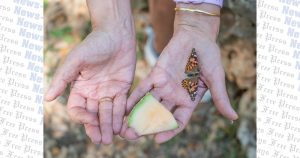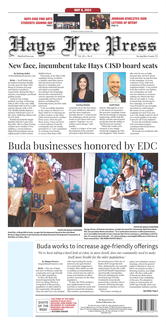The following article is part three of a four-week series focusing on raising awareness about dating violence. February is Dating Violence Awareness month and we hope to educate our community on this very important issue. One in three young people will experience dating violence in their lifetime. Locally, the Hays-Caldwell Women’s Center has been serving victims of domestic and dating violence, sexual assault and child abuse since 1978. Last year, HCWC served 2,054 victims of abuse (face-to-face) primarily from Hays and Caldwell counties.
Teenagers today face a unique set of challenges when it comes to dating. With an increased number of social media platforms, messaging apps and online interactions, maintaining a healthy relationship while managing one’s digital footprint can be a delicate balancing act. As teens engage in romantic relationships, it is even more important to understand the risks associated with being overly digitally available and the importance of protecting personal privacy.
In today’s increasingly online world, the concept of a digital footprint looms large. Every interaction, message or image shared online contributes to this footprint, shaping how others perceive us and potentially impacting our relationships. For teenagers, who are often navigating the complexities of dating for the first time, understanding the implications of their digital presence is essential.
One common mistake teens often make is oversharing personal information online. This can be posting intimate details of their relationships or sharing their location in real-time. Being overly digitally available can make teenagers vulnerable to exploitation and manipulation.
Sharing intimate images or messages can have long-lasting consequences. What may seem like a private moment shared between partners can quickly become public, leading to embarrassment, harassment or even blackmail. Understanding the risks associated with digital communication and the permanence of a digital footprint is essential for young people navigating romantic relationships.
To protect themselves and maintain healthy boundaries in the digital realm, youth can take several proactive steps:
Limit Digital Availability: Set boundaries around digital communication and avoid being constantly available online.
Be Mindful of Sharing Personal Information: Think twice before sharing personal details online, including relationship status, location or intimate images. Remember that once something is shared online, it can be challenging to control who sees it or how it’s used.
Practice Digital Privacy: Review privacy settings on social media platforms and messaging apps to control who can see your posts and contact you online.
Communicate Boundaries with Partners: Have open and honest conversations with your partner about digital boundaries and expectations. Respect each other’s boundaries and be mindful of how your actions may impact your partner’s digital footprint.
Seek Support if Needed: If you feel uncomfortable or unsafe in your relationship, don’t hesitate to seek support from a trusted adult, friend or counselor.
Navigating teen dating in the digital age requires an understanding of the risks associated with digital communication and the importance of protecting personal privacy. By being aware of their digital presence and setting healthy limits on their online availability, teens can comfortably and confidently navigate their relationships in today’s digital world.
We are committed to providing free, safe and confidential services to victims of dating violence. If you are experiencing dating violence, please call our HELPLine 24/7 at 512-396-4357. HCWC’s Counseling & Resource Center has a counselor specifically focused on Dating Violence and our Prevention Educators are available to give presentations and education about dating violence.










